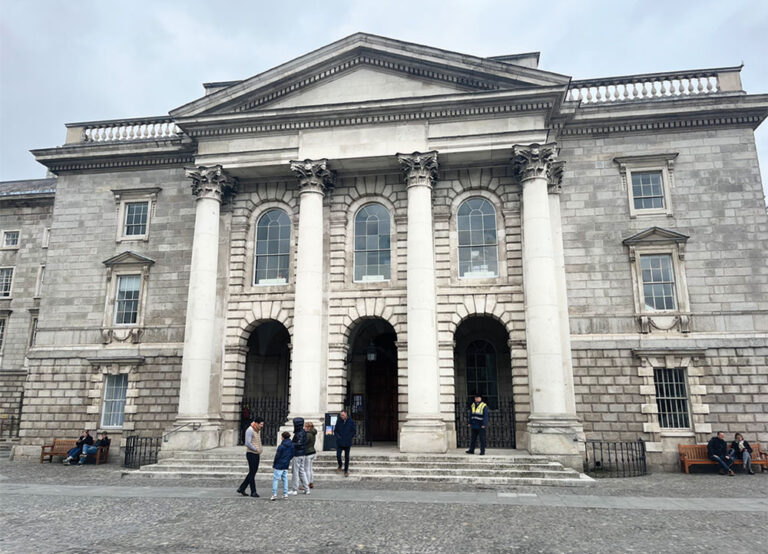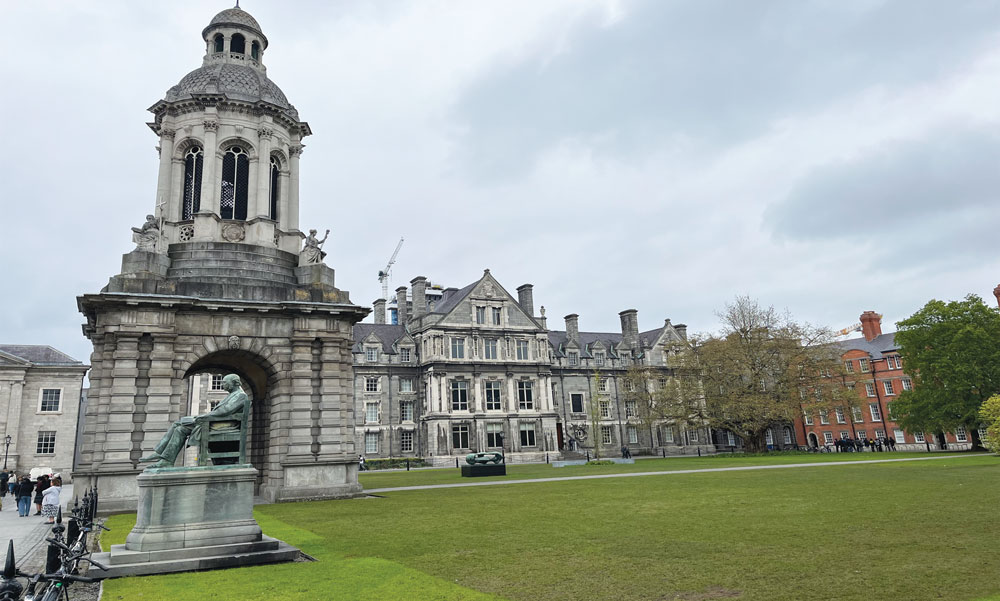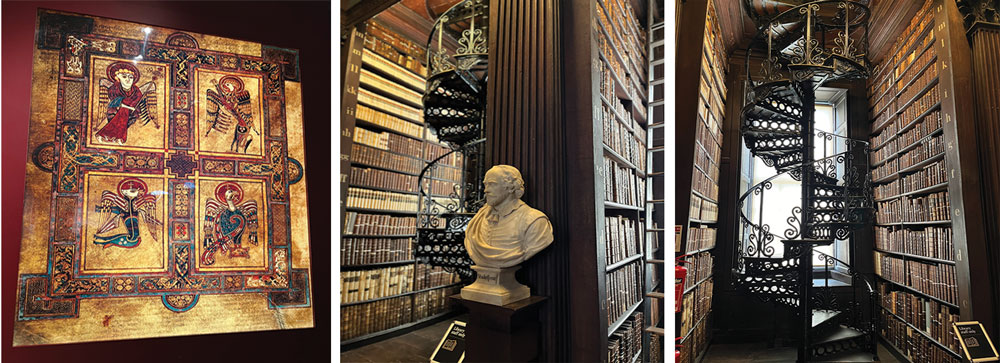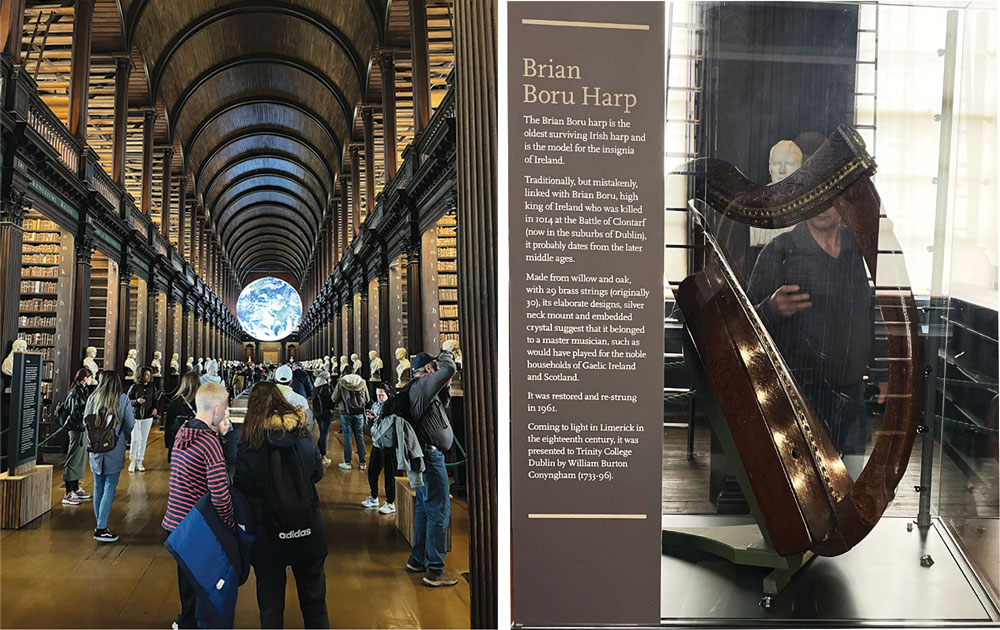GLORIA VISITS DUBLIN’S FAIR CITY - PART ONE

In Dublin’s fair city, where the girls are so pretty I first set my eyes on sweet Molly Malone As she wheeled her wheelbarrow Through streets broad and narrow Crying, “Cockles and mussels, alive, alive, oh!”
In 1988 as part of the Dublin Millennium celebrations this statue of Molly Malone was erected in Grafton Street. It is a fitting tribute to Ireland’s vibrant capital of contrasts which blends rich history with modern vibrancy. Nestled on the banks of the River Liffey, it has centuries-old buildings standing right next to contemporary architecture and at its heart is Temple Bar. This is the most popular area pulsating with live music, art galleries, and lively pubs all displaying the Guinness sign everywhere you look. If you then take a stroll through the cobbled streets of the Georgian Quarter you will come to what is a must see for all visitors to Dublin: the beautiful Trinity College.

This University of Dublin has wonderful squares where the echoes of literary giants like Oscar Wilde, Samuel Beckett and James Joyce still linger in the air. In fact Joyce drew inspiration for his celebrated novel “Ulysses” from Trinity’s hallowed halls where his character Leopold Bloom’s journey mirrors Joyce’s own encounters with Dublin.
Although still an active university Trinity is open to the public for special events and exhibitions. We went to see the magnificent “Old Library” built in the 18th century which houses one of the world’s most famous mediaeval manuscripts.

Created around the 9th century, The Book of Kells is believed to have originated in the monastery at Iona, Scotland, but later found refuge in the Abbey of Kells, Ireland, where it acquired its name. Comprised of the four Gospels of the New Testament, its pages are adorned with intricate illustrations, and ornate calligraphy.
So delicate and precious are the pages written in Latin on vellum (calfskin) it is housed in a glass cabinet which we could only view in a darkened room. No photographs were allowed but in the entrance were colourful transparencies of some of the illustrations. and ornate calligraphy. So delicate and precious are the pages written in Latin on vellum (calfskin) it is housed in a glass cabinet which we could only view in a darkened room. No photographs were allowed but in the entrance were colourful transparencies of some of the illustrations
Then it was on to the Long Room which, stretching over 65 metres in length. With its towering wooden shelves and magnificent barrel-vaulted ceiling – people were reverentially hushed upon entering . Usually it can house a vast collection of over 200,000 rare books and manuscripts from theology to science, literature to history. However many of the bookcases were empty when we visited, due to a massive restoration project currently underway where each book is being individually vacuumed cleaned and tagged

What was there though was “Gaia” , an artwork by Luke Jerram. A 6 metre installation featuring 3D NASA imagery of the earth mythologically referred to as Gaia, the goddess and personification of “Mother Earth”. The Long Room also houses The Brian Boru Harp which is the oldest surviving Irish Harp, the insignia for Ireland and the original inspiration for the Guinness logo.
